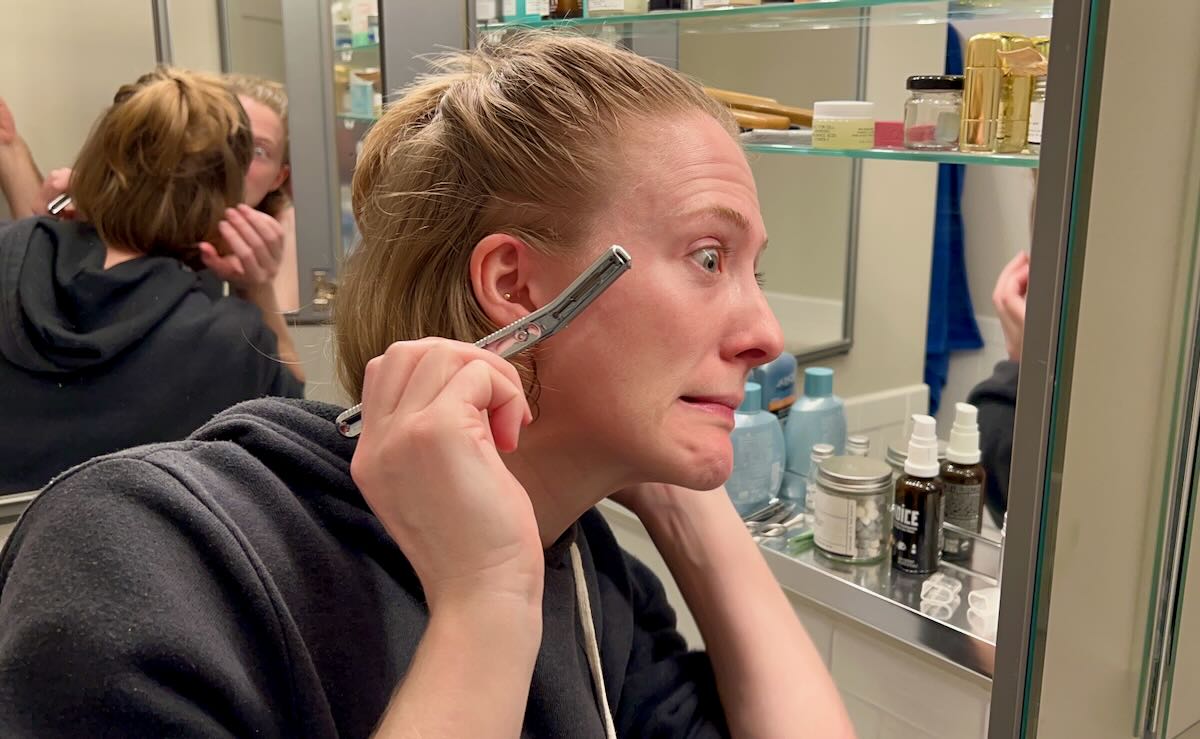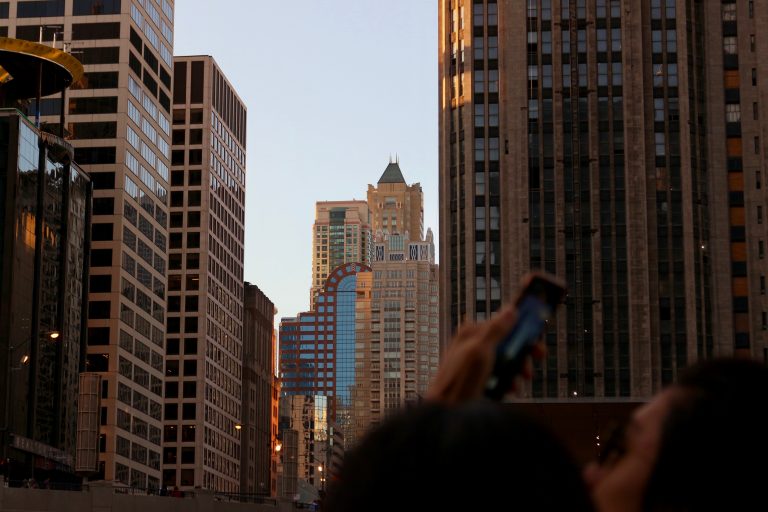Leaf Dermaplaner: Testing the Only Plastic-free At-Home Facial Tool
Leaf Shave Co. – a brand I trust and have reviewed in-depth before – just launched something that didn’t exist until now: An eco-friendly alternative to the popular (but disposable) at-home dermaplaning tools from brands like Kitsch and About The Glow.
(Well, technically, they started selling the dermaplaner in January, but I wanted to take my time testing it before writing this review.)
I’m brand new to dermaplaning. But since I love just about anything plastic-free (and am getting increasingly drawn into the world of sustainable skincare) I decided to give it a try. Read on for my full review and what I learned – so you can avoid the same mistakes I made!
If you decide to try Leaf Shave’s dermaplaner, or any of their plastic-free razors, you can save 10% with my discount code, KETTI10 .
What’s in this review:
What is Dermaplaning & why am I trying it?
Dermaplaning is a skincare technique that’s grown a ton in popularity in the last year or so. The idea is using a sharp razor blade to gently “shave” off fine hairs, along with the very top layer of skin. (The dead stuff.) It’s less scary than it sounds, and it gives your skin a fresh glow.
Professional dermaplaning, in a dermatologist’s office or spa, is done with an exposed surgical scalpel to remove the upper epidermis.
At-home dermaplaning is a little less intense, and there’s a blade guard that reduces the blade’s direct contact with your skin.
That blade guard means two things: First, it means the exfoliation from at-home dermaplaning isn’t quite as aggressive as a professional job. (But it’s still significant, and is great for removing peach fuzz hairs.)
And second, the blade guard means you’re less likely to slice your face open than you would be if you used a bare scalpel on yourself without training.
But the main reason I wanted to try dermaplaning is that Leaf Shave Co. (one of my favorite sustainable companies) just created a way to do it without any plastic.
This isn’t exactly a “beauty blog”. But I have reviewed dozens of products that eliminate single-use plastics, and I’m open to trying any innovation that helps.
(And I compared several of the Leaf’s so-called “eco-friendly” competitors, below, because I wanted to see if Leaf’s dermaplaner was really something new. Turns out, they definitely are ahead of the curve.)
Since I’m new to this particular skin treatment party, I looked up lots of dermatologists’ recommendations for how to dermaplane at home. And after binging videos of people slowly scraping away surprisingly thick layers of peach fuzz, built-up dirt, and dead skin cells, I decided to give it a try.
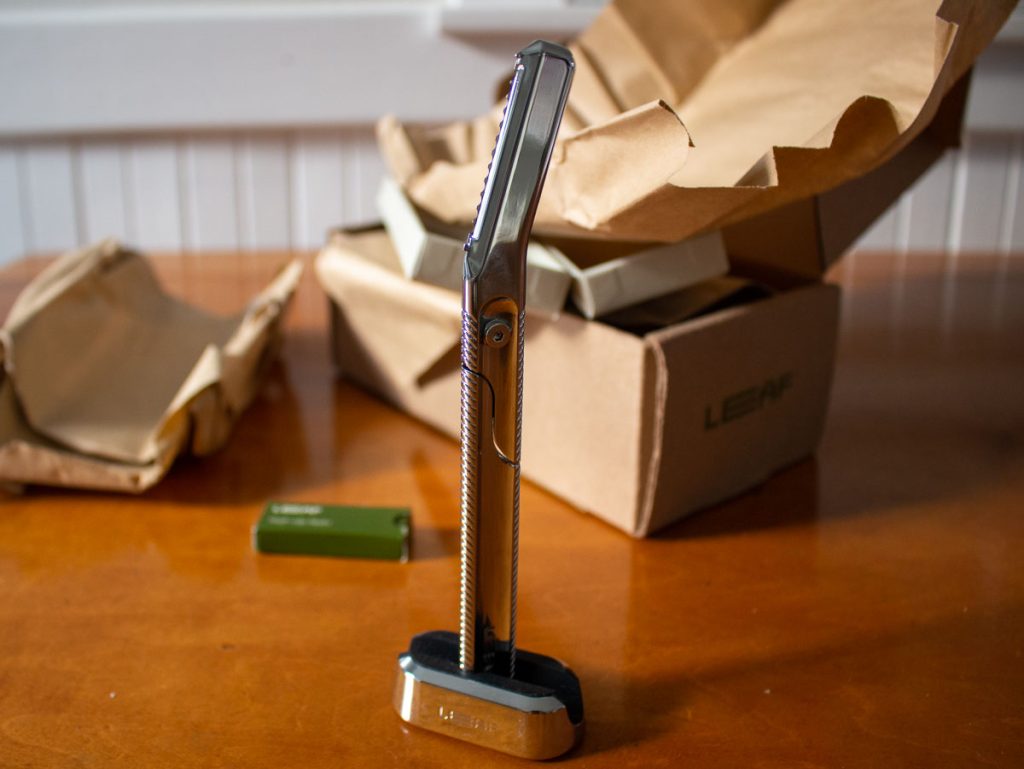
Three Reasons the Leaf Dermaplaner is Better
These are the reasons I chose to try the Leaf dermaplaner over any other brand (more on those below). They’re doing three things that are unique in the industry, for sustainability and affordability:
1. First, no part of the tool is disposable.
Every single at-home alternative for dermaplaning that I’ve been able to find (below) uses at least some single-use plastic elements that will just end up in the trash. (Most of the tools are fully disposable; some use plastic cartridges with a reusable handle. Either way, most of the elements aren’t even recyclable.)
2. It’s more affordable – even compared with the disposables.
Even the cheapest alternatives are more expensive than the Leaf’s dermaplaning refills, which cost less than a dollar for a fresh blade and blade guard. (Both of those pieces are 100% stainless steel, and can be easily collected in a blade tin and recycled with other metal.)
3. You can use the tool with any standard safety razor blade.
Leaf sells their own blades ($12 for 50), but you can use others if you already have some at home, or have a favorite brand. Just wash and dry your original blade guards that come with the dermaplaner, and replace only the blades themselves.
Impressions After My 1st Dermaplaning Session
Without a doubt, the strangest thing about my first time using the dermaplaner was hearing the sound of it scraping hairs and skin cells off of the side of my face. Of course, this showed exactly how much of a newb I am at this. I’m sure people who normally shave their faces, or have dermaplaned before, won’t be surprised by this…? But I was.
It just so happens that the technique Leaf recommends is the perfect way to experience that creepy sound when you first start:
Technique: How to Dermaplane At-home
First, start with a clean, dry face. You can add a bit of shave oil if you want, but it’s not necessary. I used Leaf’s shave oil, after trying it dry at first, and I did prefer the softer feel.
(Later, I tried it with a facial cleansing oil, which worked just as well – and could keep you from buying multiple products. This plastic-free and refillable one is the brand I use.)
The instructions from Leaf tell you to start on your cheek, right in front of your ear, hold your skin taught from the hair line, and work your way toward the center of your face, or in the same direction as the hair growth (not “against the grain”). Use light pressure, with the tool angled at about 45 degrees to your skin, and short, feather-like strokes. (Don’t dig in, and don’t drag it across your entire face in one stroke.)
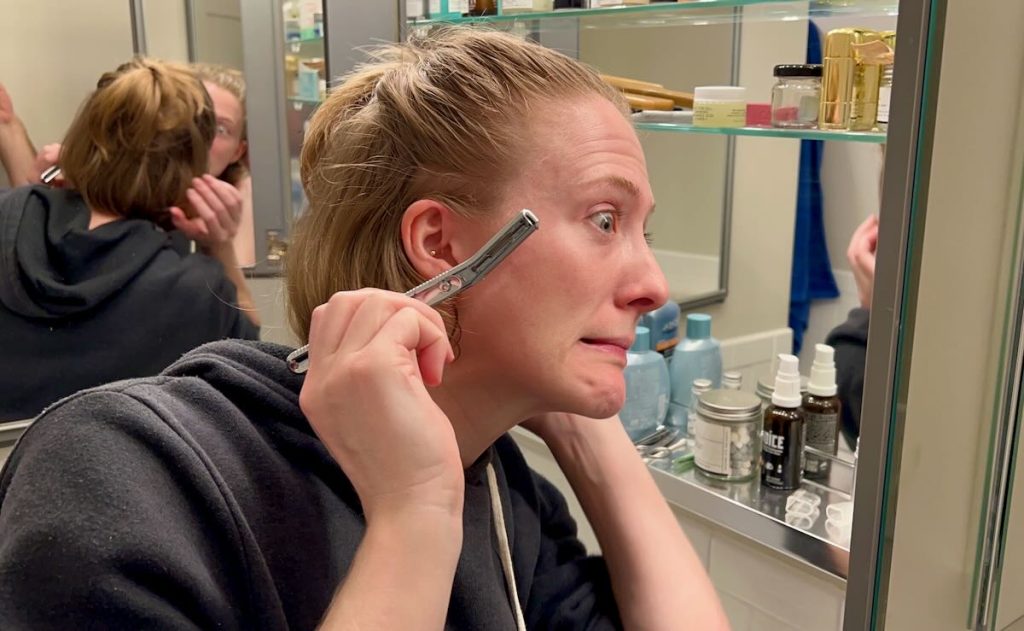
At first, it was a strange sensation. But after the initial surprise of the scrape-y sound, I got the hang of it quickly — maybe a little too quickly.
I was really careful on the first side of my face. But by the second side, I was getting tired of the process, was hungry for dinner, and got a bit overconfident. Meaning: I went a little too fast and too aggressively. When I was done, I noticed I’d actually ended up with two very small cuts, but they were entirely my fault. Don’t rush the dermaplane!
(Don’t worry, it was nothing like my bloody experience with fixed-blade safety razors, which was much worse, even though I had been much more careful.)
Dermaplaning Results (Good & Bad)
In short: I guess it’s not just hype. I did notice instantly how smooth and bright my skin looked after dermaplaning. (And it makes sense. It’s the same effect you see on a man’s freshly shaved face – but a step up, since dermaplaning removes more dead skin cells than normal shaving.)
But after I finished and applied my usual serum, I realized I had a red, almost razor-burn sort of mark on some areas (on the side where I had rushed and been too aggressive). It was mostly on my jaw line and corners of my forehead. (Those bony protrusions, where there’s less flesh to soften the blow.)
I know it looks bad. But the redness was mostly gone in less than an hour, and the marks were imperceptible by the next morning. (Less than 12 hours after dermaplaning.)
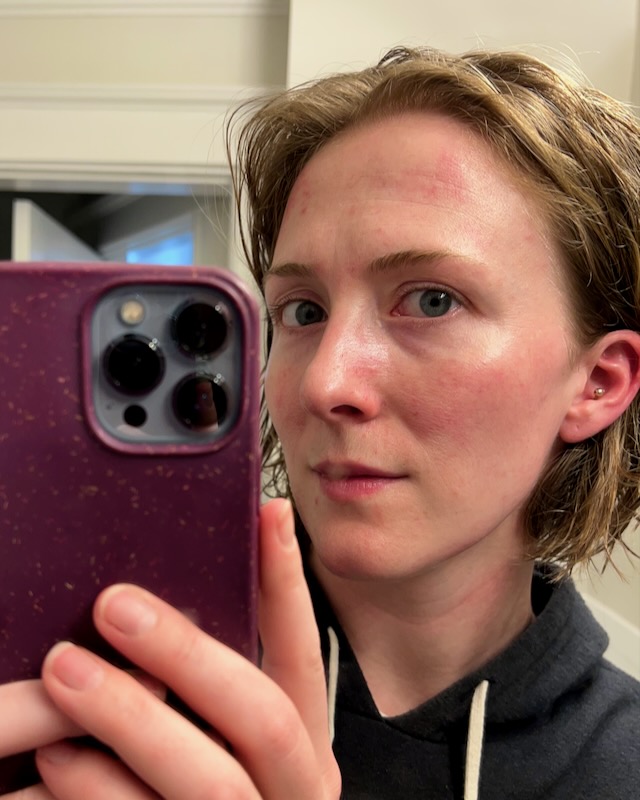
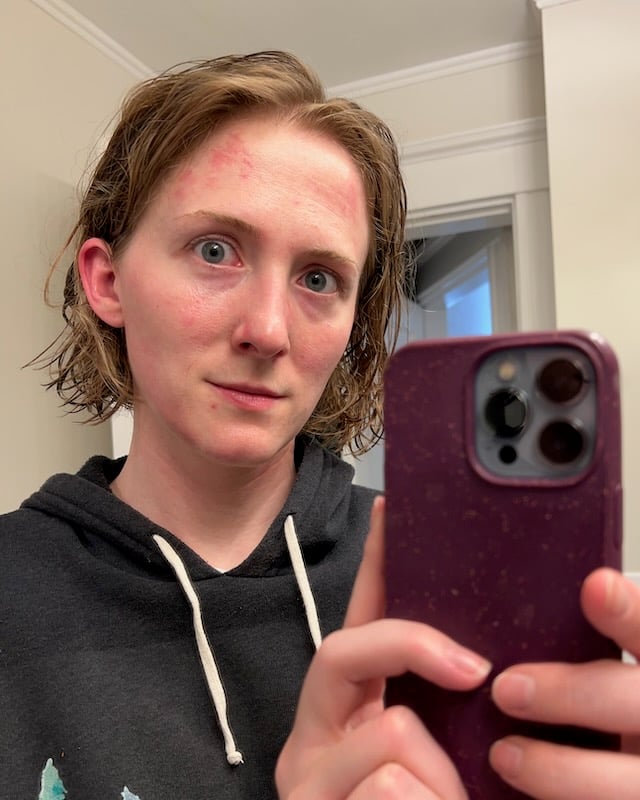
See the difference in the redness from the first side of my face to the second? That’s the difference between dermaplaning slowly and carefully and… not so much.
The other thing I noticed was that after dermaplaning for the first time, my trusty serums that I always use actually stung my skin a bit. That was new. But the stinging went away very quickly, in just a few seconds.
[Related: Here’s my full review of the sustainable serums I use – plastic-free and refillable!]
And I guess it makes sense. After all, one of the benefits of dermaplaning is that it lets your treatments and serums soak into your skin better, because there are no hairs or dead skin cells to get in their way.
And I have to say that, yeah, my face did look damn good.
The next day, when I put on even light make-up (a touch of my plastic-free concealer and highlighter), I noticed that it went on more smoothly, blended more easily, and even a very small amount went further than before.
The Learning Curve
The second time I used the Leaf, five weeks later, I was a better at being gentle and had much less redness. (Although still some around my left temple. You know how it’s always harder to put makeup on one eye than the other? I think it’s the same concept.)
This was just ten minutes after dermaplaning:
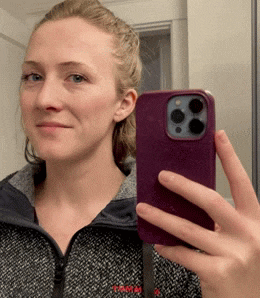
Same mirror selfie, much better result! (Yes, I’m wearing mascara, but I remembered to take a photo before putting anything on my skin besides my solid serum and moisturizer.)
I used a solid vitamin C serum this time (another plastic-free fave), and it didn’t sting at all, although the moisturizer I applied on top still did.
[Related: For more solid skincare, check out my review of SBTRCT, a new plastic-free brand from the UK!]
Regrets: Stubble and Acne?
This is the question everyone asks, and that had made me a bit nervous after looking up dermaplaning reviews: Did my facial hair grow back thicker after dermaplaning? The short answer: No.
The long answer: Still no.
I’ve waited an entire month after I first used the tool before answering this question, and I can honestly (and happily) say that no, those vellus hairs haven’t become anything different. They were peach fuzz before, and they came back just the same.
Of course, it’ll be different for everyone, but for me, it took about 5 days after dermaplaning before I began to feel the hair growing back. (I was checking my face obsessively to be able to answer this question.) But to my surprise, the hairs weren’t more noticeable as they grew back in – and there was definitely no sharp stubble at all.
All was clear on the acne front, too. Despite having fairly sensitive and reactive skin, dermaplaning didn’t cause me any pimples or breakouts. (Although when you do have active breakouts, you don’t want to dermaplane over them. That would be a good recipe for a cut.)
Now, a month later, my face is just the way it was before dermaplaning – hairs and all.
Tips for Taking Care of Your Skin after Dermaplaning
Every dermatologist seems to recommend using sunscreen for a few days after dermaplaning, since removing that top layer makes your skin more sensitive to sun exposure. I definitely listened. (Especially because I tested the tool for the first time right before traveling to one of the sunniest regions of the world – Baja California – for an adventure cruise.)
(And, yes, I do have a nearly-plastic-free sunscreen recommendation, too.)
The hardest thing afterwards was keeping my hands off my baby-soft face – which dermatologists do recommend, to prevent breaking out after dermaplaning. It’s a good habit all the time, but especially with freshly exposed pores that are no longer hiding behind dead skin and hair.
Dermaplaning results are supposed to last 2 to 3 weeks, and you shouldn’t re-do the process more often than that. (I found that my skin looked brighter for at least that long, even after the peach fuzz started to grow back.)
How is Dermaplaning Different from Shaving?
This was my first question when I started researching this, and in case I didn’t answer it above, there are some differences between normal shaving and dermaplaning.
At-home dermaplaning uses a single blade with a blade guard, which offsets the shaving edge. This means it cuts the hair at a different angle than shaving, and makes it safer and gentler on your skin.
And while hair removal is part of it, a lot of the appeal is exfoliation, too. (The result being smoother makeup application, and better absorption of products – like serums and moisturizers.) That exfoliation, combined with the removal of fine hairs, makes for smoother, brighter skin, more even skin tone, reduced appearance of fine lines and scars, and prevention of future breakouts.
(Although, logically, dermaplaning can be irritating for very sensitive skin, and can’t be done over active breakouts. Pretty similar to regular shaving in that regard, but a bit more.)
What About for Shaving Eyebrows?
The same at-home dermaplaning tools are also sold as eyebrow razors, for removing fine hair from the brow area (or just about anywhere).
I’ve steered clear of my eyes so far, but the Leaf Dermaplaner comes with a “precision clip” to shorten the length of the blade and get into small areas without losing a whole eyebrow. So if you do use a disposable eyebrow razor, this would make a great alternative without the waste.
Price & Bottom Line on the Leaf
So after all this, am I confident that I need to add dermaplaning to my regular beauty routine?
Not necessarily. It’s definitely an extra. And even after seeing results I liked, my first question from the beginning – “so I’m supposed to shave my face now, too?” – is still relevant. (No, I don’t have to, and neither do you.)
But I didn’t set out to write a review of dermaplaning as a technique, I set out to review the Leaf Dermaplaner as a tool.
And I am confident that Leaf has produced yet another high-quality, plastic-free tool that you can use to replace a disposable version. For that, I’m fully on-board.
And for the reasonable price, this seems like a no-brainer if you are interested in regular, at-home dermaplaning. (Leaf’s flagship razor that I’ve used for a couple of years costs $84, so I was surprised to see the dermaplaner launch at $39.)
They also offer a dermaplaning starter kit that comes with a stand and a 10-pack of replacement blades and blade guards for $59. (Saving you $5, if you would have bought all of them.)
You’ll also save another 10% with my discount code for Leaf Shave Co. – KETTI10 .
There’s also a blade recycling tin available for collecting blades and guards – or you could just use a mint tin with no problem.
And everything from Leaf Shave has a 30-day trial period and lifetime warranty.
I have no trouble believing their “lifetime” promise. I first tested and reviewed Leaf Shave’s original plastic-free razor almost two years ago. It’s still like new today, even after daily use since then – and despite the abuse of being part of my plastic-free travel toiletry kit.
I’m as careful as I can be with it, but it takes a lot of bumps from being with me for all my travels. And I have yet to invest in the travel case, although maybe I should… but I just keep hoping I’ll find some little box around the house that I can reuse for the purpose.
The point being, I think this tool will last well, too, as long as you take care of it. (It’s simple to clean, with just soap and water.)
Other Eco-Friendly Dermaplaning Tools?
Other brands of at-home dermaplaning tools that I’ve found make sustainability claims that are just blatant greenwashing.
This first offender on the list is Kitsch, whose “eco-friendly dermaplaners” are “made from plant-based fibres that don’t contribute to plastic waste.”
What they’re describing is bioplastic. Yes, it’s made from plants (better than being made from petroleum) but it’s still a single-use product that can’t be recycled and will end up in the landfill. That’s not something to call eco-friendly.
And one helpful commenter noted in the Kitsch reviews on one website that the products even come packaged in plastic. Sadly, that’s a common way of greenwashing cheap personal care products (which I’ve been writing about for years).
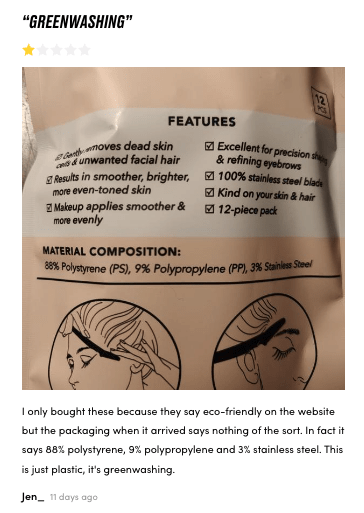
The Leaf dermaplaner, on the other hand, comes in completely recycled and recyclable cardboard and paper packaging. (Just like all of their products.)
Next is Little Eco Company, which makes a similar dermaplaning tool, with a bioplastic handle that you can mail back to them for recycling. Of course, there’s no proof that they actually do dismantle and recycle the tools, but I haven’ found evidence that they don’t, either.
But the real issue is… whether you actually will mail them back (or whether most people will).
I’m speaking from experience here. It’s easy to think, “Oh great, that’s better for the environment, I’ll do that,” before clicking add to cart. But then how often do you forget? The simplest option – the one that takes away any extra effort required to make something more sustainable – is always the best.
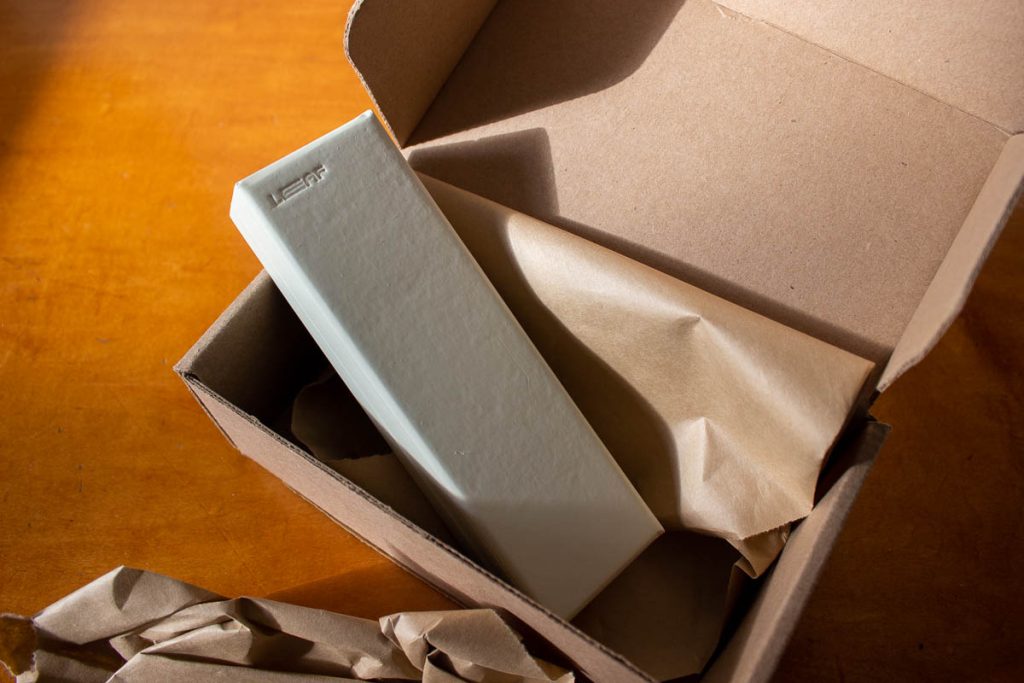
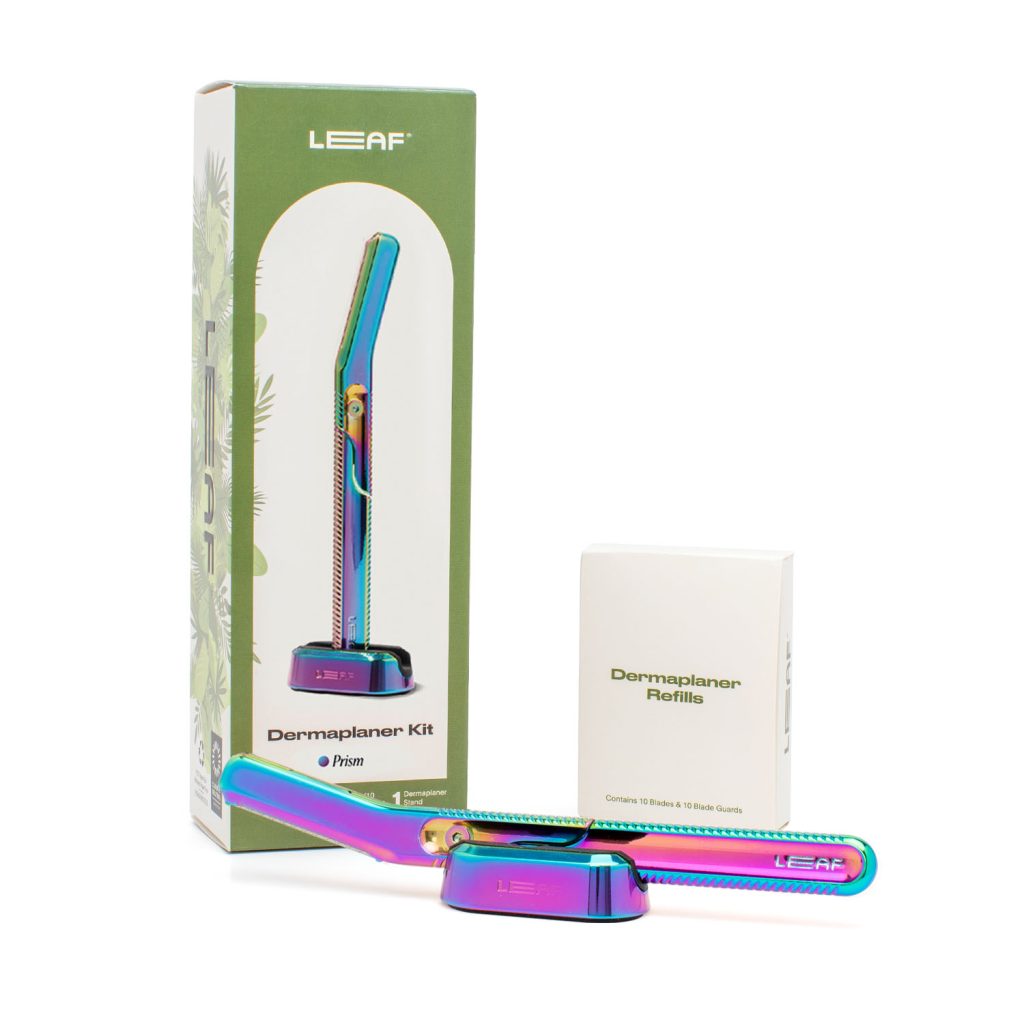
I’ve also written a lot about mail-in recycling programs before. And I’ve come to think they’re generally just an easy way to for companies to ease our guilt over buying single-use products, instead of bothering to create better alternatives.
When it’s done well, mail-in recycling is probably better than nothing. But where there’s an easy, affordable, genuinely zero-waste alternative that doesn’t require it (and now there is), then there’s just no point in relying on this crutch.
Finally, there’s greenwashing at the high-end of the market, too, starting with Stacked Skincare. This brand makes a $75 reusable dermaplaning handle, and inexplicably expensive $8 refill blades – which still have plastic cartridges.
Meanwhile, each refill blade + blade guard from Leaf costs less than $1. (And, unlike pretty much every other razor system out there, you’re not locked in to using their blades. The blade guard is unique – and it’s what allows the dermaplaner to work with any brand of safety razor blades, just like all Leaf razors.)
If you want to try Leaf’s new dermaplaner, or any of their other plastic-free shaving tools and skincare products, you can use the code KETTI10 to save 10% on your entire order!

